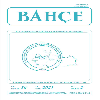Vaccinium myrtillus ve Inula viscosa BİTKİ EKSTRAKTLARININ Monilinia fructigena’ya KARŞI KONTAK AKTİVELERİ ÜZERİNE BİR DEĞERLENDİRME
AN EVALUATION ON THE CONTACT ACTIVITIES OF Vaccinium myrtillus and Inula viscosa PLANT EXTRACTS AGAINST Monilinia fructigena
___
- 1. Al-Dissi, N.M., A.S. Salhab, H.A. Al-Hajj, 2001. Effects of Inula viscosa leaf extracts on abortion and implantation in rats. Journal of Ethnopharmacology 77:117-121.
- 2. Al-Masri, M.I., Harawi, S.M., Barakat, R.M., 2015. Effect of clammy Inula (Inula viscose) plant extract in combination with a low dose of the fungicide Iprodione on Botrytis cinerea in vitro and in vivo. American Journal of Plant Sciences 6:1519-1526.
- 3. Anonim, 2019. https://www.bizimbitkiler.org. tr/v2/hiyerarsi.php?c=inula (Erişim Tarihi: 01.11.2019).
- 4. Bayar, Y., A. Onaran, M. Yilar, F. Gul, 2018. Determination of the essential oil composition and the antifungal activities of bilberry (Vaccinium myrtillus L.) and bay laurel (Laurusnobilis L.). Journal of Essential Oil Bearing Plants 21(2):548-555.
- 5. Burt, S., 2004. Essential oils: their antibacterial properties and potential applications in foods a review. International Journal of Food Microbiology 94:223-253.
- 6. Cutler, H.G., R.A. Hill, B.G. Ward, B.H. Rohitha, A. Stewart, 1996. Antimicrobial, insecticidal and medicinal properties of natural products, flavors and fragrances. In: Takeoka, G.R., Teranishi R., Williams, P.J. and Kobayashi, A., Eds., Biotechnologies for Improved Foods and Flavours, American Chemical Society 51-66.
- 7. Giovanelli, G., S. Buratti, 2009. Comparison of polyphenolic composition and antioxidant activity of wild Italian blueberries and some cultivated varieties. Food Chemistry 112:903-908.
- 8. Hammer, K.A., Carson, C.F., Riley, T.V., 1999. Antimicrobial activity of essential oils and other plant extracts. Journal of Applied Microbiology 86:985-990.
- 9. Jaakola, L., A. Tolvanen, K. Laine, A. Hohtola, 2001. Effect of N6-isopentenyladenine concentration on growth initiation in vitro and rooting of bilberry and lingonberry microshoots. Plant Cell Tiss Organ Cult. 66:73-77.
- 10. Kadıoğlu, İ., Y. Yanar, U. Asav, 2004. Allelopathic effects of plant extracts against seed germination of some weeds. Asian J. of Plant Sciences 3(4):472-475.
- 11. Kordali, S., A. Cakir, A. Mavi, H. Kilic, A. Yildirim, 2005. Screening of chemical composit ion and antifungal and antioxidant activities of the essential oils from three Turkish Artemisia species. Journal of Agricultural and Food Chemistry 53:1408-1416.
- 12. Lev, E., Z. Amar, 2000. Ethnopharmacological survey of traditional drugs sold in Israel at the end of the 20. Century. Journal of Ethnopharmacology 72:191-205.
- 13. Miljković, V., Nikolić, G., Mihajlov-Krstev, T.M., Arsić, B., 2018. Antibacterial activities of fruits extracts of three mulberry species (Morus alba L., Morus rubra L. and Morus nigra L.) and bilberry (Vaccinium myrtillus L.). Acta Medica Medianae 57(3):5-12.
- 14. Moze, S., Polak, T., Gasperlin, L., Koron, D., Vanzo, A., Ulrih, N.P., Abram, V., 2011. Phenolics in Slovenian bilberries (Vaccinium myrtillus L.) and blueberries (Vaccinium corymbosum L.). J. Agric. Food Chemistry 59(13):6998-7004.
- 15. Omezzine, F., M. Daami-Remadi, A. Rinez, A. Ladhari, R. Haouala, 2011. In vitro assessment of Inula spp. organic extracts for their antifungal activity against some pathogenic and antagonistic fungi. African Journal of Microbiology Research 5(21):3527-3531.
- 16. Pandey, D.K., N.N. Tripathi, R.D. Tripathi, S.N. Dixit, 1982. Fungitoxic and phytotoxic properties of essential oil of Hyptis suaandolens. Z. Pflanzenkrankheiten Pflanzenschutz 89:344-349.
- 17. Paster, N., B.J. Juven, E. Shaaya, M. Menassherov, R. Nitzan, H. Weisslowicz, U. Ravid, 1990. Inhibitory effect of oregano and thyme essential oils on moulds and food borne bacteria. Let Appl. Microbiol. 11:33-37.
- 18. Petróczy, M., Szigethy, A., Palkovics, L., 2012. Monilinia species in Hungary: morphology, culture characteristics, and molecular analysis. Trees: Structure and Function 26(1):153-164.
- 19. Pottier Alapetite, G., 1981. Flore de la Tunisie. Angiospermes-dicotylédones, Gamopétales. Programme flore et végétation tunisiennes 655-1190.
- 20. Prabuseenivasan, S., Jayakumar, M., Ignacimuthu, S., 2006. In vitro antibacterial activity of some plant essential oils. BMC complementary Alternative Medicine 6:39-45.
- 21. Wilkins, K.M., R.G. Board, 1989. Natural antimicrobial systems. In Mechanisms of Action of Food Preservation Procedures 285-362.
- 22. Yılar, M., Y. Bayar, 2018. Antifungal activity of Thymbra spicata L. and Rosmarinus officinalis L. essential oils against Monilinia fructigena honey in whetze. Türk Tarım ve Doğa Bilimleri Dergisi 5(2):121-126.
- ISSN: 1300-8943
- Yayın Aralığı: 2
- Başlangıç: 1968
- Yayıncı: Atatürk Bahçe Kültürleri Merkez Araştırma Enstitüsü
Yılmaz SESLİ, Faik Ekmel TEKİNTAŞ
Ertan Sait KURTAR, Önder TÜRKMEN, Musa SEYMEN, Ayşe Nur ÇETİN
VITICULTURE INDUSTRY OF ATU GAGAUZIA AND ITS DEVELOPMENT IN MODERN CONDITIONS
ŞALAK KAYISISI VE IĞDIR İÇİN ÖNEMİ
Turan KARADENİZ, Berna DOĞRU ÇOKRAN
AHIR GÜBRESİ VE AZOTLU GÜBRE UYGULAMALARININ DEREOTU (Anethum graveolens L.) VERİMİ ÜZERİNE ETKİSİ
‘OWARİ SATSUMA’ MANDARİN ÇEŞİDİNİN SOĞUKTA MUHAFAZASINA SODYUM METABİSÜLFİT UYGULAMALARININ ETKİLERİ
Ahmet Erhan ÖZDEMİR, Safder BAYAZIT, Mustafa DİDİN, Najd ALAKRAA, Hasan Kaan GÜRSES, Mehmet Kazım AKI
ALIÇ (Crataegus azarolus L.) TOHUMLARININ ÇIKIŞ ORANLARI ÜZERİNE BAZI UYGULAMALARIN ETKİLERİ
Oğuzhan ÇALIŞKAN, Derya KILIÇ, Kazım MAVİ, Safder BAYAZIT
SERT KABUKLU MEYVE TÜRLERİNİN VAN GÖLÜ HAVZASINDA MEVCUT DURUMU VE POTANSİYELİ
